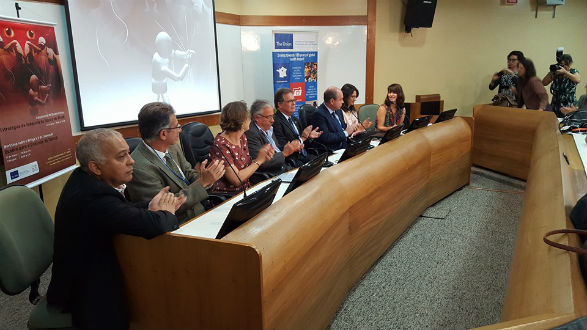
Dear friends and colleagues. It is, as always, a pleasure to be back in Rio. It is a city I just don’t seem to be able to stay away from.
I want to start today’s meeting with an image - the image of a sentinel on a hill, someone on the lookout for threats and who can sound the alarm when they see something that risks the community.
It is not enough for this observer to keep their eyes open. They must also develop expertise, to understand the environment they watch and to notice subtle changes, so that when they look at the landscape they see more than the ordinary mortal.
Today, we’re here to celebrate the Brazilian Observatory at Fundação Oswaldo Cruz, FIOCRUZ, and to reflect upon its role in the global chain of interlinked centres. Together, these observatories in Brazil, Russia, India, China and South Africa will monitor the behaviour of the tobacco industry across a vast area that is home to 40% of the world’s population. (I should mention too that Sri Lanka has also expressed an interest).
These new units are the watchtowers of the public health movement, helping us to see the tobacco-control landscape in greater detail. They will communicate with professionals at the national level, but they also have an international function in communicating with one another to create a global tapestry describing the behaviour of the tobacco industry across continents.
The idea was endorsed by BRICS health ministers at their meeting in Moscow in October, when they “stressed the importance of monitoring the strategies of the tobacco industry”.
Let me explain, briefly, how this all came about. The focus on monitoring can be traced back to Article 5.3 of the World Health Organization Framework Convention for Tobacco Control (WHO FCTC). This public health treaty, which I represent, entered into force in 2005 and has been the primary means of tackling the global tobacco epidemic ever since.
Article 5.3 says that signatories, including Brazil and the other BRICS countries, should protect public-health policies from the interests of the tobacco industry. This means that we must guard against tobacco-industry interference.
But that’s only possible if we know what to expect, if we know what this interference looks like.
At first hearing, this may sound like an unimportant aspect of the global battle against tobacco use, but it is actually one of the most critical aspects of our work.
I willingly concede that the fight against all non-communicable disease has its challenges, but tobacco is one of those rare afflictions that has a multibillion dollar industry fighting to maintain consumption, an industry that makes every effort to ensure that public health fails and disease wins.
We must understand the ways in which the industry does this. How does it operate – what is its strategy and what are its tactics? How far is it willing to go? And does it operate different approaches in different parts of the world?
Only by better understanding this enemy can we develop our own responses and so reverse the rising consumption of tobacco around the world.
Of course, we’re not starting from scratch and there is a good body of knowledge already in existence. This has come from academic and non-profit groups which have invested time and effort to gain this understanding. Brazil’s own Centre for the Study of Tobacco and Health, CETAB, here at FIOCRUZ, has done invaluable work. Each observatory will have a unique contribution to make – for example Brazil is one of the world’s three largest tobacco producers, and is a major exporter. That gives us the opportunity to examine the tobacco industry’s behaviour towards farmers, and the influence it seeks to exert on negotiations concerning world trade.
We need more knowledge of course, but we also need to distil and share the material we already have, both with BRICS observatories and with other academic institutions like the University of Bath’s TobaccoTactics website in the United Kingdom. By creating a global network of affiliates around the world, we’ll be able to see what is happening on the ground and consider our strategies.
Because the tobacco industry itself is a global phenomenon. The “Big Five” tobacco companies take a global perspective. They understand that they are under growing pressure, especially in high- and middle-income countries, as governments grasp the sheer scale of the costs that tobacco consumption imposes.
These privately owned industries take the profit, but they refuse to take responsibility for the damage they do. In other words, the benefits of tobacco consumption are privatised, but the costs are nationalised – they simply dump responsibility for the illnesses caused on the taxpayer.
They have acquired significant expertise over the past half century, as public health campaigners have used incontrovertible medical evidence to show the damage that their products cause.
We can predict the tobacco industry’s likely behaviour when faced with a threat: first, they seek to block innovations like the FCTC, or national initiatives like plain packaging. Next, they try to soften the terms and lastly – with amazing hypocrisy – they present themselves as partners, as a key player in the public health arena.
Within this broad description of tobacco-industry behaviour, there are numerous twists and variations, local differences and derivations that together create a complex picture.
Brazil’s observatory exists to help us better understand what the industry is doing. It’s an important link in our new global chain, and helps us see into areas that were previously covered by darkness, the darkness that the tobacco industry prefers and embraces.